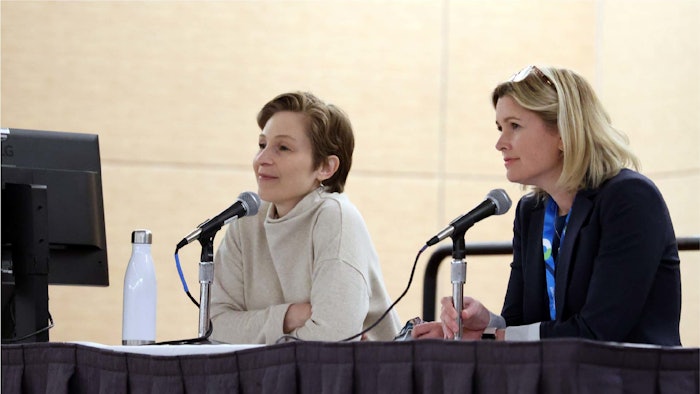The best defense in the age of biologics
Speakers evaluate familiar infections that sometimes coexist with dermatologic disease.

Three speakers addressed testing and treatment for dermatologic disease in patients suspected of having COVID-19, HIV, hepatitis B and C, and tuberculosis. During Friday’s U022 – Danger and Defense in the Age of Biologics, they also explored conditions under which treatment with biologics was recommended.
Because in many instances more definitive data, clinical trials, and guidelines are still needed, according to the speakers, the treatment discussion was predicated largely on available literature and the speakers’ own experiences. Using case studies from their practices, they described the steps they took, revealed their experiences, and provided results for those cases.
Universally, they encouraged thorough testing as a starting point. Most dermatologists check their patients for underlying infections prior to starting systemic therapy, whether conventional immunosuppressants or biologic therapies. However, a positive test will require new disease management and treatment considerations.
“Immunosuppressives are not a significant risk factor for COVID-19 infection,” said Kieron Leslie, MBBS, professor of dermatology at the University of California, San Francisco, and head of the HIV Dermatology Clinic at Zuckerberg San Francisco General Hospital. On the other hand, he said high-dose steroid use appears to increase the risk of infection.
He pointed to AAD guidance related to COVID-19, which simply says to continue immunosuppressives in patients who have not tested positive or exhibited symptoms of COVID-19, discontinue in patients who have tested positive for COVID-19, and restart when they have recovered.
Because patients with HIV are more susceptible to psoriasis and other inflammatory skin diseases, Dr. Leslie suggested topical therapy in mild-to-moderate cases, phototherapy, and antiretrovirals as first-line therapeutic agents in mild-to-severe cases, and oral retinoids for second-line treatment. For more severe disease, he said cautious use of cyclosporine, methotrexate, hydroxyurea, and tumor necrosis factor-alpha inhibitors may be considered.
Dr. Leslie said the optimal approach for immunosuppressive management in dermatology patients with HIV is to:
- optimize antiretroviral therapy
- consider non-immunosuppressive alternatives
- consult with the HIV/ID physician
- monitor the CD4 count/viral load
Erin Huiras Amerson, MD, FAAD, chief of dermatology service at Zuckerberg San Francisco General Hospital and UCSF clinical professor of dermatology, reviewed hepatitis B and C epidemiology, testing, and treatment.
She discussed drug choice (IL-12/23, IL-23, IL-17, and rituximab) and monitoring of patients with viral hepatitis who are initiating biologics and recommended when prophylactic antiviral treatment may be appropriate.
Detailing regimens for patients with tuberculosis, Rita Khodosh, MD, PhD, FAAD, vice chair and associate professor of the department of dermatology at the University of Massachusetts, said pretreatment latent tuberculosis infection (LTBI) testing is recommended for all psoriasis biologics.
Tumor necrosis factor inhibitors carry a high risk of tuberculosis reactivation. The risk may not be increased with IL-17 and IL-23 inhibitors. She also noted that shorter treatment regimens for LTBI are preferred due to the higher likelihood of completion. Biologics may be restarted one month after the initiation of LBTI treatment, she said. For active tuberculosis, biologics may be restarted after at least six months of treatment.
Visit AAD DermWorld Meeting News Central for more articles.
